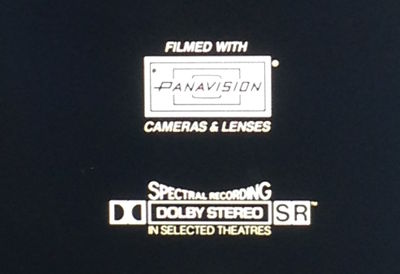| Welcome to Sprocket School! This project is maintained by volunteer editors. Learn more about how this works. |
Dolby SR: Difference between revisions
Jump to navigation
Jump to search
No edit summary |
No edit summary |
||
| Line 12: | Line 12: | ||
* Wikipedia: [http://en.wikipedia.org/wiki/Dolby_SR Dolby SR] | * Wikipedia: [http://en.wikipedia.org/wiki/Dolby_SR Dolby SR] | ||
[[Category:Sound formats]] | [[Category:Sound formats]] | ||
[[Category:Sound]] | [[Category:Sound]] | ||
Revision as of 16:52, 10 December 2016
Dolby Spectral Recording, commonly called Dolby SR, is a four channel sound format – left, center, right and surround. It is the most common optical sound format on films made after 1986.

Dolby SR vs. Dolby A
Dolby SR is difficult to distinguish from Dolby A by sight. Here are some tips on telling them apart:
- Some (but not all) films made after 1986 will have Dolby SR tracks, though A-type was still in use well into the 90s.
- Some (but not all) films with Dolby SR tracks will display the words "Dolby SR" with the Dolby logo in the end credits
- Some (but not all) films with Dolby SR tracks will display the words "Dolby SR" on the edges of the film leader.
- A Dolby SR track played in Dolby A will usually sound fine, but will have more noise than you would expect from a soundtrack with Dolby Noise Reduction.
External Links
- Wikipedia: Dolby SR